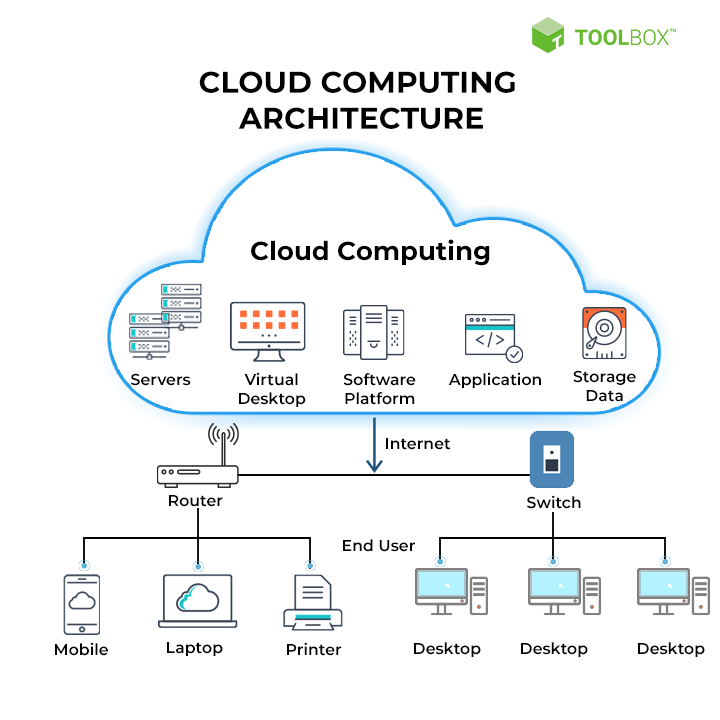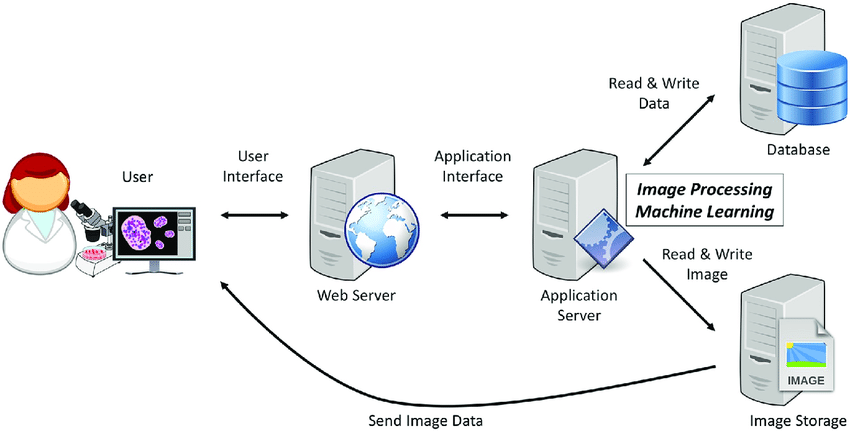Cloud computing offers numerous benefits for businesses of all sizes. In the past, the IT industry mostly used cloud computing for software development and testing, disaster recovery, data backup, and more. However, different industries worldwide now recognize the importance of cloud computing. From automotive and retail to agriculture and healthcare, many industries today use the cloud because of its high flexibility, scalability, cost-effectiveness, and more.

Image source
The need for cloud computing in the media and entertainment industry is significantly increasing. Why? Think of how often you pull up a YouTube video, a movie on Netflix, or an album on Spotify. Demand for quick access to entertainment anywhere, any time is increasing. Hence, media and entertainment companies worldwide are migrating to the cloud to ensure fast digital content delivery. The media cloud essentially helps media companies to provide Over-the-Top (OTT) streaming services to deliver digital content directly to customers over the internet. Cloud media eliminates the need for a system operator to deliver content to viewers.
But, what is a media cloud?
In this article, we’ll provide a thorough understanding of media cloud hosting, cloud media orchestration, cloud media workflow, cloud video streaming, cloud video encoding, cloud video transcoding, advanced media processing in the cloud, batch processing in cloud, and more.
A Cloud for Streaming Media
In today’s digital world, linear television that involves the traditional broadcasting system is outdated. People now prefer streaming platforms that give them the freedom to watch their favorite content anytime, anywhere.
Media and entertainment companies must find ways to meet the demand and expectations of audiences and retain their loyalty. This is where the need for cloud computing in the media and entertainment industry arises.
What Is Media Streaming?
Before we discuss the role of the cloud in stream media and media streaming services, let’s first discuss cloud storage media streaming.
Streaming media refers to multimedia, such as video or audio, that is delivered over the internet in compressed form. Users can play such media content immediately without the need to save or download it to their hard drive first. Users can pause, rewind, or fast-forward the streaming video or audio just like they can with a downloaded media file.
Another modern term related to streaming media is OTT (Over-the-Top) media service. OTT is essentially any streaming service that provides media content over the internet. Examples of OTT services include Netflix, Hulu, and Spotify. We’ll dig deeper into these later.
How Does Cloud Computing Help with OTT and Streaming Media?
OTT services involve formatting several video files for delivery to any device with an internet connection. OTT broadcasting or streaming involves complex workflows and requires powerful infrastructure.
Using on-premise systems for OTT media steaming can affect the quality of experience that audiences expect. On-premise systems don’t usually offer the high computing capacity and scalability required to deliver content without any interruptions. Additionally, on-premises OTT streaming services require complex ongoing maintenance and involve high costs.
Cloud computing technology solves all of these issues. For example, cloud computing simplifies processes so that there isn’t any complex cloud media workflow. Cloud media streaming has emerged as the perfect solution for OTT services. The cloud offers the scalability and flexibility required to handle complex and advanced workflows. The media cloud helps companies to manage, distribute, and protect digital content efficiently. The result? Customers can watch smooth, crystal-clear videos that don’t buffer or skip! Simply put, cloud computing reduces streaming latency to provide a better user experience.
Applications of cloud computing in the media and entertainment industry include cloud video and audio streaming, cloud-based audio recording, media asset management cloud, cloud media archive, and more.
Cloud Video Streaming

Image source
A cloud video streaming solution involves streaming and storing videos in the cloud using a network of video streaming servers in the cloud.
Some of the key features of the best cloud service for video streaming and best cloud storage for streaming video include:
- Efficient video hosting: allows video streaming service providers to deliver content anytime
- Ability to live stream video to cloud storage: cloud service for video streaming allows you to record live streams and stream video from cloud storage anytime.
- A cloud video encoder or cloud video encoding service: essential for cloud-based live video streaming. Cloud media file encoding or video encoding in the cloud refers to converting a video file from one format into another.
- A cloud video transcoding service: allows you to prepare your videos to be delivered on the web. Transcoding means creating different versions of the same video, each version with a different size and quality.
- Video analytics support.
- A cloud-based media player: such as an HTML5 video player.
Use Case: Netflix
An example of a cloud-based streaming OTT service provider is Netflix. Netflix uses a cloud media player and cloud-based media server for cloud-based video streaming, cloud video processing, cloud-based video encoding, cloud-based video transcoding, cloud media analysis, and more. Some other popular examples of cloud video streaming services include Hulu and YouTube.
Cloud-Based Audio Streaming
Cloud audio streaming means delivering audio, such as music, over the internet. With cloud music services, you can access songs online and listen to them whenever you want. Some cloud-based music streaming services also provide cloud storage for audio files. This allows you to upload your audio files remotely or record them with an audio cloud recorder.
Use Case: Spotify
An example of a cloud-based audio streaming service is Spotify, which allows you to stream music over the internet via an audio cloud player. Spotify also allows users to create saved playlists, store songs, and listen in offline mode.
There’s a Cloud for That. Ridge.
Ridge’s Anywhere Cloud allows for companies in any segment of the media and entertainment industry to deliver content with lightning speed, and scale to their heart’s desire. Ridge’s ability to have PoPs anywhere by connecting to data centers around the world allows for hyper-low latency when delivering media content, which is optimal for customers who want to stream their favorite Netflix flicks! Media companies do not need to worry about building their own infrastructure any time they need to be in any location, Ridge takes care of that. Their business can grow untethered while delivering to customers all over the world!
Frequently Asked Questions (FAQs)
What are the applications of cloud computing in the media and entertainment industry?
Cloud media services include cloud audio recording, cloud audio editor, cloud media management, cloud media asset management, cloud collaboration for audio, cloud-based audio conferencing, and more.
What is cloud processing or processing cloud?
Cloud-based processing or media cloud processing includes audio, video, and image processing in the cloud. Image processing cloud computing is used in different fields, such as medical science, security applications, satellite applications, and more.
What is cloud video streaming?
Cloud computing for video streaming refers to streaming and storing videos in the cloud using a network of servers. The best cloud for video streaming allows the streaming service providers to deliver uninterrupted video content and enhance user experience.
What is the process as a service in cloud computing?
Process cloud service or process as a service in cloud computing utilizes the efficiency of cloud media solutions to provide organizations with all the resources, such as the latest tools, technologies, and processes, they need to operate.















